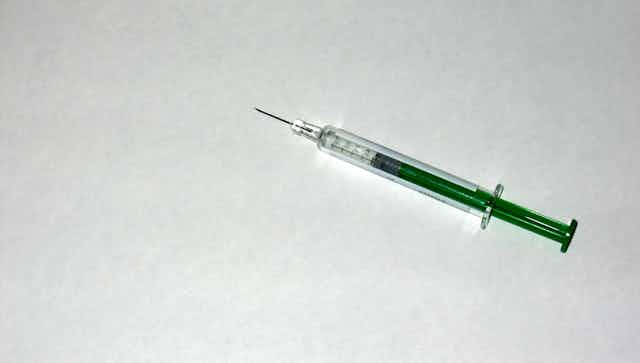Unsurprisingly for a year that’s featured major events such as the Olympics and Paralympics, as well as annual fixtures such as the Tour de France, doping in sport has been big news in 2012. So where do we go from here?
The culmination of the Lance Armstrong doping affair in August – at which point the US Anti-Doping Agency (USADA) stripped the seven-time Tour de France winner of all titles won since August 1998 - caught many in the media and in the sporting world by surprise.
To others, of course, the USADA “revelations” were simply confirmation of ongoing suspicions.
Three major themes emerged during coverage of the Armstrong case:
1) Armstrong never failed a doping test. That is not entirely true but this is a popular meme in the retelling of the story so we will let that pass.
2) Armstrong was not alone and many other elite cyclists were also doping. While we cannot be certain, “many others” does not equate to “all others”.
3) While the strategies used by Armstrong and his colleagues to evade detection were the result of careful planning, it would probably be wrong to think of Armstrong as some form of criminal mastermind. For a wide range of reasons (including regular tip-offs of doping tests), the anti-doping agencies and sporting bodies were remarkably easy to outwit.
In light of these factors, many are questioning whether doping should continue to be treated as a crime.
The case for doping
The arguments in favour of legalisation have not changed greatly over the years and at first glance the logic appears sound.
One such argument posits that sport is inherently “unfair” when an athlete who is genetically gifted is faster than everyone else and keeps winning races.
While some would see such victories as part of the attraction of sport, others have quite a different perspective, seeing only inequality and a need to “level the playing field” through the supply of performance enhancements to “disadvantaged” athletes.
To safeguard the health of athletes, legalisation of doping would be accompanied by a “harm reduction” system, whereby athletes would be able to openly use performance enhancing drugs as prescribed and administered by a medical doctor.
Proponents of such a view typically argue that the spectacle of sporting competition would be boosted by such a development (athletes would throw, hit and run faster than ever, etc.).
The problem of “cheating” would also be removed by the simple expedient of legalisation (it can’t be cheating if it is not against the rules).
In Australia the Ministerial Council on Drug Strategy argues for harm reduction as one of its three pillars, the other two being “demand reduction” and “supply reduction”.
But demand and supply reduction are rarely mentioned in the context of anti-doping work; more often harm reduction is portrayed as a standalone solution.
This is probably not surprising as the policy documents that are typically cited in support of harm reduction in sport typically do not actually mention either doping or sport.
It is not always clear what “harm” would be reduced by legalising doping in sport, although three possible candidates are:
1) ill-informed advice (e.g. doping schedules based on unreliable information)
2) contaminated supply
3) the threat of severe shame and punishment
Serious problems no doubt, but are they sufficient to justify legalisation?
The case against doping
Drug legalisation is an argument that struggles to find widespread support beyond a handful of advocates.
In Australia, a 2009 survey my colleagues and I conducted regarding public opinion about drugs in sport (with a large, nationally representative sample), found that 90% of the Australian public saw the problem of performance-enhancing drug use in sport as serious; 96% agreed that doping athletes should feel guilty about breaking the rules; and 91% believed that companies should stop sponsoring doping athletes.
Our survey of elite Australian athletes in 2009-2010 revealed a similar pattern of results.
If we can take such findings on face value, it would appear public and elite athletes are thus opposed to performance-enhancing drugs.
Talk talk
Rather than showing the war on doping has failed, the Armstrong case highlights the new direction in anti-doping: the value of “non-analytical positives”. That is, evidence of doping from sources other than biological testing.
Sports bodies have typically adopted an almost exclusively biological approach to drug detection.
It is a popular fallacy, known as the “CSI effect”, that most criminal investigations are solved through the use of scientifically verifiable evidence (such as fingerprints or DNA).
In reality, the majority of cases are solved through evidence obtained during interviews with witnesses, or from suspects via confessions.
Last year, the World Anti-Doping Agency (WADA) released guidelines concerning the coordination of investigations between anti-doping agencies and other public agencies, most significantly, police forces. The guidelines state:
These new partnerships will allow Anti-Doping Organizations to take advantage of the investigative powers of those public authorities, including search and seizure, surveillance, and compulsion of witness testimony under penalties of perjury.
To many in the sporting world, especially those advocating legalisation of doping, this possible direction in anti-doping will undoubtedly be horrifying. Nevertheless, as an “alternative” strategy it has considerable merit.
It would be consistent with existing anti-doping efforts; it would largely be received positively by the public and athletes; and, perhaps most significantly of all, it might actually work.

